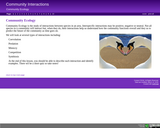
Introduction to community interactions for AP Biology.
- Subject:
- Biology
- Life Science
- Material Type:
- Lesson
- Author:
- Deb Henry
- Date Added:
- 03/19/2018

Introduction to community interactions for AP Biology.
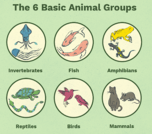
4th Grade Elementary school CLIL lesson about the Animal Classes

7th Grade Elementary school CLIL lesson about the Animal Classes

This is the template for submitting BELTA Conference generated lesson plans to the group.
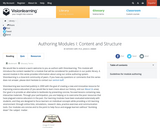
This module provides information on the content and writing style used in writing a Visionlearning teaching module.

The lesson plan focuses on the students playing the role of adult effective decision-makers who can help the planet and imagine its future. Students will build upon their knowledge of climate change causes, effects, and solutions. Students use the four-language skills in content based and language instructions class. They work cooperatively and collaboratively utilizing different higher thinking skills. Students are assigned to write their reflection about the lesson using Google forms and turn their ideas for the planet future into a projects.Photo was made by Salwa Aly using Canva App
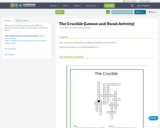
This resource includes a lesson on the different elements of The Crucible. It also includes a vocabulary activity.
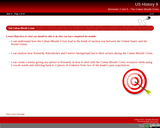
This is a module that implores students to think from an historical perspective about the Cuban Missile Crisis and create a memo of advice for President Kennedy on which action he should take.
Lesson Objectives or what you should be able to do after you have completed the module:
I can understand how the Cuban Missile Crisis lead to the brink of nuclear war between the United States and the Soviet Union.
I can analyze how Kennedy, Khrushchev and Castro's background led to their actions during the Cuban Missile Crisis.
I can create a memo giving my advice to Kennedy in how to deal with the Cuban Missile Crisis scenarios while using 5 vocab words and referring back to 2 pieces of evidence from two of the leader's past experiences.

This resource provides lecture notes and writing assignments for the study of drama. While Othello and Trifles are mentioned specifically, these notes and assignments can be adapted and applied to practically any play. Unless otherwise noted, the materials in this unit are licensed under CC BY-NC-SA.
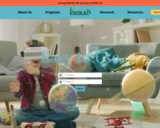
ESCOLAR aims to offer ALL elementary and middle-school students the opportunity to learn science within an engaging online environment.
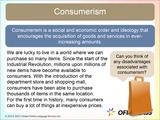
This ESL lesson plan on consumerism and consumption is suitable to use with advanced-level students. You must use this lesson with mature students that can engage with the content…I know my adult students love this lesson! Not to mention, I love teaching it! In any case, you should use this lesson plan to practice reading, speaking and listening as well as to introduce your students to new vocabulary.If you want additional lesson plans and support, including teachers’ notes, be sure to register for a free Off2Class account.
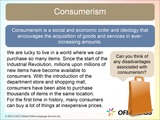
This ESL lesson plan on consumerism and consumption is suitable to use with advanced-level students. You must use this lesson with mature students that can engage with the content…I know my adult students love this lesson! Not to mention, I love teaching it! In any case, you should use this lesson plan to practice reading, speaking and listening as well as to introduce your students to new vocabulary.If you want additional lesson plans and support, including teachers’ notes, be sure to register for a free Off2Class account.
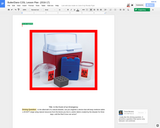
An engineering and design lesson for middle school (our 7th grade standards).
In the aftermath of a natural disaster, can you engineer a device that will keep medicine within a 40-60°F range using natural resources from the biome you live in, and/or debris created by the disaster for three days, until the Red Cross can arrive?
You are a team of relief workers in __________________after a major earthquake/tsunami has occurred. Your team lead as just told you about a young women with diabetes has been injured and needs insulin to be delivered __________ miles away (no open roads). Your team will need to research, design, and build a portable device to keep the insulin between _____ and ______ °(F/C) for _____ days. Once you return you will present the effectiveness of your device to your lead and a team other relief workers showing your both your design/device and explaining the process.
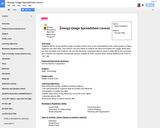
Students will be using real-life energy use data to learn how to use spreadsheets and create graphs to better organize and view data. Discussions can then follow to analyze the data and explain the usage. Real rates are then provided, and students can use the electricity consumed data to create a utility bill for the consumer and compare the standard Residential Service charges to if the member were instead billed by the “Time of Use” rate.
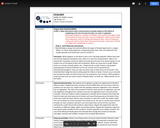
In this lesson, students will learn what erosion is and how human actions influence erosion. Includes introduction, demonstration instructions, and questions for wrap-up discussion.
NGSS: 4-ESS2-1
Time: 55 minutes
Materials: plastic containers with sand and gravel, sponges, and plastic cups
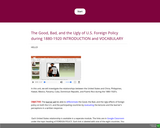
Determine the relationship between the United States and eight countries
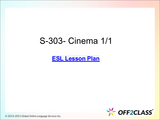
When to teach this lesson plan?If you are looking for a speaking lesson to use with intermediate-level students, then this is a perfect lesson to use. This lesson plan on cinema is designed to use with students that are looking to increase their fluency in speaking English. This lesson should not be used to teach beginner-level students that are still learning to form basic sentences in English.If you want additional lesson plans and support, including teachers’ notes, be sure to register for a free Off2Class account.
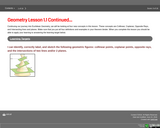
Lesson covers collinear points, coplanar points, opposite rays and intersection of two lines, two planes or a line and plane.
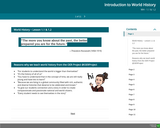
This lesson serves as an introduction/review looking at primary/secondary sources; historical perspective/scale; and evaluating sources.

This is a 2-hour lesson plan designed for elementary students to introduce them to the basics of art critique, using digital tools and collaborative activities. It follows a STEAM approach and focuses on developing vocabulary and communicative competences (writing, speaking, listening, and reading).